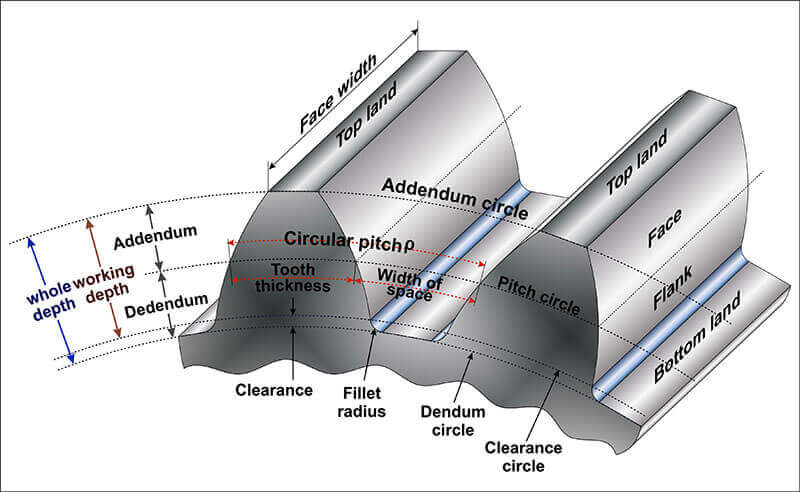 01/30/2023
01/30/2023Precision Gear Introduction
Dating back as early as the 14th century, we can find drawings and designs of the first gear mechanisms in Leonardo da Vinci’s notebooks. Nowadays, the usage of gears can be seen in every part of our life. From the simplest door lock to rocket science, gears play a tiny but significant part in the machine. So, what are the crucial factors of a gear that holds the whole thing together? Let us show you!

Tooth Profile
Have you ever noticed that gears are not square-shaped like in cartoons but mostly involute (pointy but round)? Wouldn’t it be better if two square gear teeth matched perfectly together? Starting with the gear teeth profile or teeth shape, each factor of this tiny piece has its own background story.
First, you need to understand that the primary purpose of gears is to transmit power and motion smoothly. If too much friction or interference between the mating gear teeth, the machine will not perform efficiently, and gears might even break after a short time.
If the gear teeth are involute-shaped, the curved surface will allow the pitch point to transfer the motion more smoothly and allow a higher engagement tolerance between gears. A strong dedendum is another advantage.
The tilt angle of the teeth, also known as the “Pressure Angle”, is commonly known to be 20 degrees nowadays, which results in a higher-strength gear tooth that offers better wear-resistance characteristics. Other than that, the teeth angles might also vary according to different requirements of the gear usage. However, GPI can manufacture the most suitable gear based on customers' demand.
Gear Accuracy and Strength
Now that we have scratched the surface of both topics: Gear Teeth Profile and Pressure Angle, let’s elaborate on these two factors.
A good product requires durable and quiet mechanisms to keep it operational. “Quiet” means that the gears must transmit power smoothly and accurately with minimum vibration and noise.
In addition, every specification of the tooth profile, including trace, contact, and pitch dimension, must be accurate, and run out must be reduced to a minimum.
To withhold such force from the pressure point during transmission, the gear must also possess high bending strength and surface durability, achievable by choosing suitable materials or using heat treatment. If any of these factors mentioned above fail, results could vary from energy losses to whole machine shutdowns.
GPI Precision Gears Are Capable Of?
As one of the leading manufacturers in precision gears, our products can reach grade JIS 4 and be able to apply to various mechanisms such as OPC Drum Gear, Automobile Gear, and E-bike Gear. So whether you are looking for plastic or metal precision gears, GPI will be your best solution and partner.
To monitor and guarantee our quality precision, we possess several measurement instruments and certificates, which we will discuss in our next issue, where we discover how we control our product quality to fulfill customers’ requirements. See you next time!



